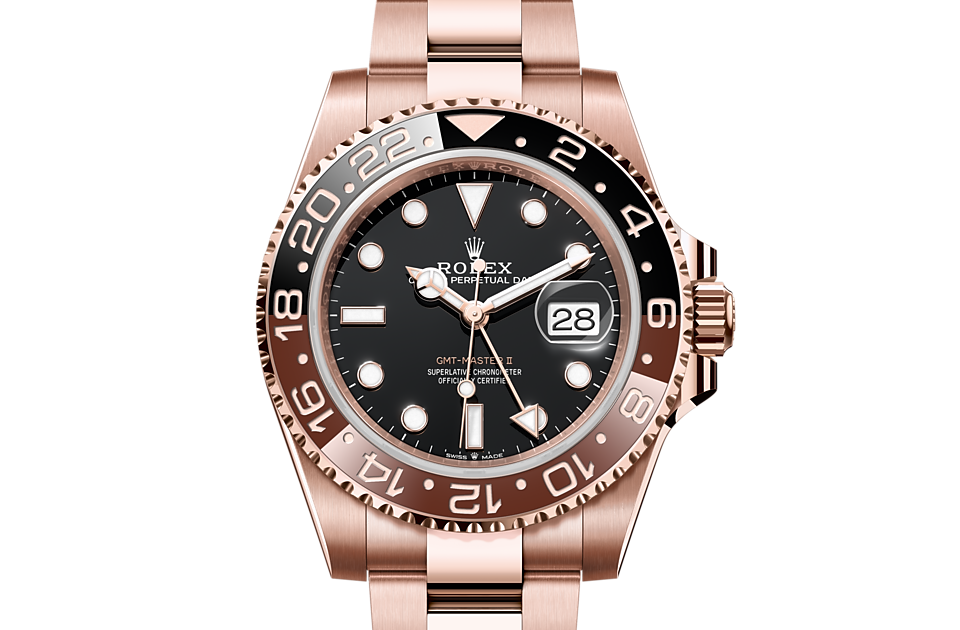
The Rolex GMT Master is not just a luxury timepiece; it is an icon of travel and aviation, an emblem of a world increasingly connected by jet travel. It epitomizes Rolex’s tradition of exceptional functionality combined with understated elegance, making it a beloved choice for pilots, travelers, and watch connoisseurs alike.
This article covers the rich history and enduring significance of the Rolex GMT Master, exploring its evolution and how it has become a symbol of cosmopolitan life and adventure.
Origins and Aviation Connection
The story of the Rolex GMT Master begins in the 1950s, an era marked by significant advancements in transcontinental travel. As commercial flights grew longer, crossing multiple time zones became a regular occurrence for pilots who needed a way to keep track of time in more than one location simultaneously. To meet this need, Rolex, in collaboration with Pan American World Airways (commonly known as Pan Am), introduced the Rolex GMT Master in 1954. This watch featured a unique 24-hour hand and a rotatable 24-hour scale bezel, designed specifically to allow aviators to set the watch to GMT (Greenwich Mean Time) or another time zone, and then set the bezel to track a second-time zone.
Design and Functionality
The initial model, the Rolex GMT Master Reference 6542, set the standard with its fourth hand, which completed a rotation every 24 hours. Its bezel, initially made of Bakelite and later replaced by metal for durability, was two-toned, with red representing daylight hours and blue indicating nighttime hours. This color coding was not just functional but also added an aesthetic appeal to the watch. The design has been refined over the years, but the essential features remain, making the Rolex GMT Master instantly recognizable.
In 1983, the Rolex GMT Master II was introduced, enhancing the original design with a new movement that allowed the hour hand to be set independently of the other hands, improving the functionality for global travelers who needed to adjust their watches without stopping the second, minute, or 24-hour GMT hand.
Technological Innovations
Throughout its history, the Rolex GMT Master has included various technological advancements that have reinforced its status as a tool watch. Rolex introduced the sapphire crystal in the late 1970s, replacing the acrylic crystal, which added scratch resistance and an upgraded look. Another significant enhancement was the introduction of the Cerachrom bezel in 2005. Made from a hard, corrosion-resistant ceramic, the Cerachrom bezel maintained its color despite exposure to sunlight and was resistant to scratching, an essential feature for a watch subjected to the rigors of frequent travel.
Cultural Impact
Beyond its technical achievements, the Rolex GMT Master has made a considerable cultural impact. It has been the choice of countless high-profile adventurers, executives, and celebrities, further cementing its reputation as a watch for those who are frequent fliers and globetrotters. Its association with elite aviation and constant innovation has made it a symbol of progress and exploration.
The Rolex GMT Master is often seen as a reflection of the jet-set lifestyle of the 1950s and 1960s, symbolizing the glamour and excitement of international travel at a time when it was becoming accessible to a broader audience. This allure has not faded; if anything, it has grown. The watch is not merely a tool but a part of history—a companion of choice for those who traverse the globe, whether for business, pleasure, or adventure.
The Collector’s Favorite
For watch collectors, the Rolex GMT Master holds a special place. Vintage models, especially those with unique features or dial variations, are particularly coveted. The so-called “Pepsi” bezel, with its vibrant red and blue color scheme, is especially sought after due to its striking appearance and historical significance as one of the first bezel color schemes. Collectors also prize the “Coke” bezel, with its black and red design, and limited edition pieces that Rolex has released over the decades.
The value of a Rolex GMT Master can vary significantly depending on the model, its history, and its condition. Limited edition releases and models once owned by notable figures fetch high prices on the auction block, making them not only a wearable piece of history but also a potentially wise investment.
Final Thought
The Rolex GMT Master’s significance lies in its perfect balance of form and function. It was designed as a tool for a specific group—pilots—but has transcended this initial purpose to become a beloved classic. Its ability to adapt to the needs of those who travel across time zones while maintaining its elegance and precision reflects the core values of Rolex: durability, reliability, and timeless style.






